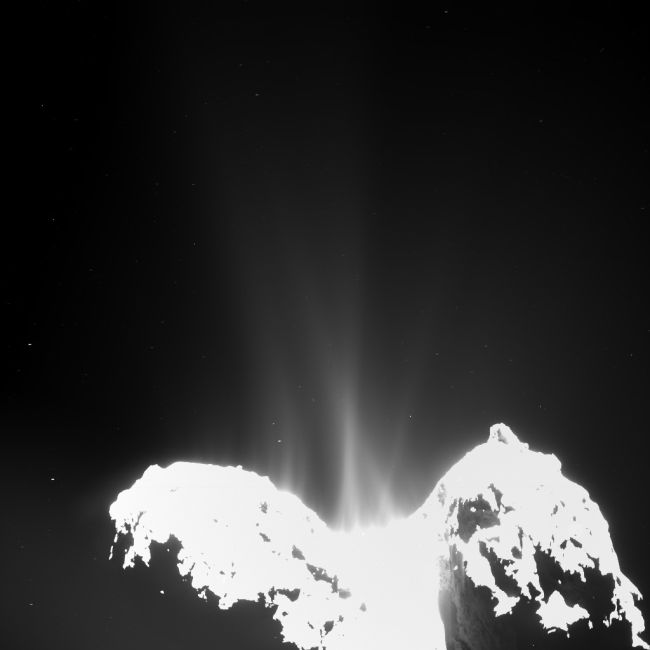|
|
Rosetta Space Probe And Philae Module, 67P/Churyumov–Gerasimenko Comet, European Space Agency
|
ALICE (an ultraviolet imaging spectrograph). The ultraviolet spectrograph will search for and quantify the noble gas content in the comet nucleus, from which the temperature during the comet creation could be estimated. The detection is done by an array of potassium bromide and caesium iodide photocathodes. The 3.1 kg (6.8 lb) instrument uses 2.9 watts and was produced in the USA, and an improved version is used in the New Horizons spacecraft. It operates in the extreme and far ultraviolet spectrum, between 700 and 2,050 ångströms (70 and 205 nm).
OSIRIS (Optical, Spectroscopic, and Infrared Remote Imaging System). The camera system has a narrow-angle lens (700 mm) and a wide-angle lens (140 mm), with a 2048×2048 pixel CCD chip. The instrument was constructed in Germany.
VIRTIS (Visible and Infrared Thermal Imaging Spectrometer). The Visible and IR spectrometer is able to make pictures of the nucleus in the IR and also search for IR spectra of molecules in the coma. The detection is done by a mercury cadmium telluride array for IR and with a CCD chip for the visible wavelength range. The instrument was produced in Italy, and improved versions were used for Dawn and Venus Express.
MIRO (Microwave Instrument for the Rosetta Orbiter). The abundance and temperature of volatile substances like water, ammonia and carbon dioxide can be detected by MIRO via their microwave emissions. The 30 cm (12 in) radio antenna was constructed in Germany, while the rest of the 18.5 kg (41 lb) instrument was provided by the USA.
|
|









